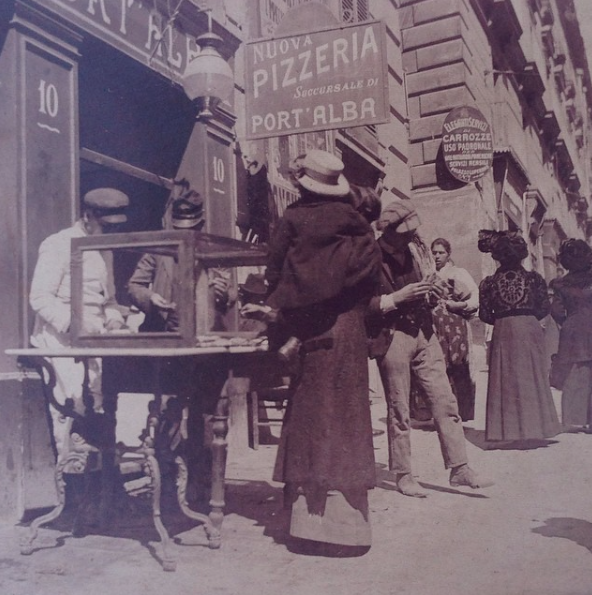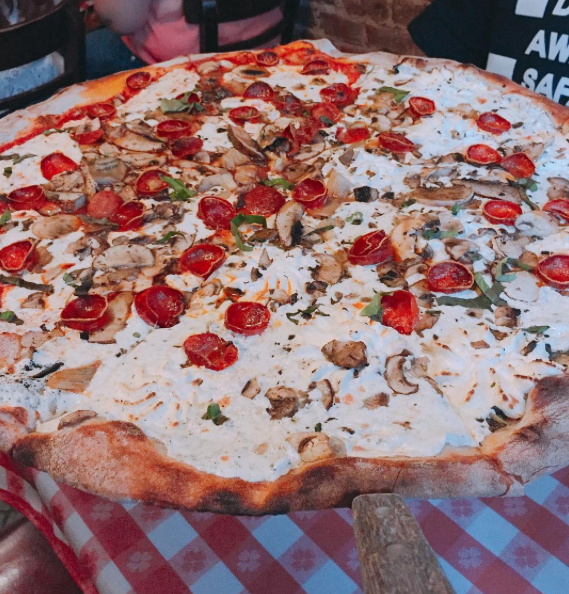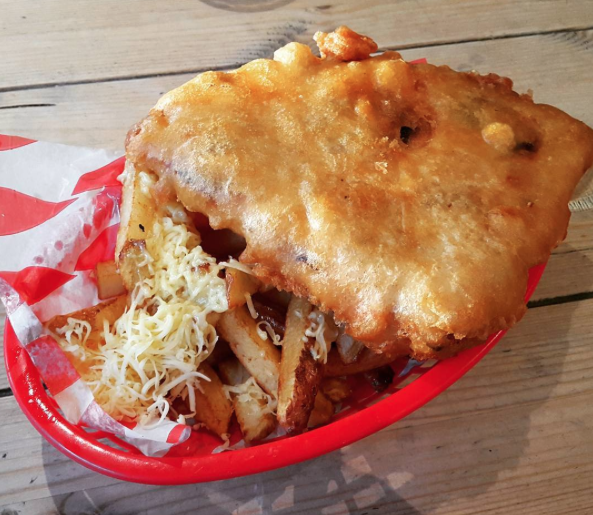“Is pizza really Italian?” is the burning question going through all of our minds as well devour slice by slice of what seems to be one of America’s favorite foods. Some have rumored that pizza isn’t actually of Italian origin, but was invented by an American. Well, they are wrong. Here is the real truth behind the history of the compilation of cheese, tomato sauce, and crust, we now call “pizza.”

GIF courtesy of giphy.com
According to history.com, pizza did indeed get its start in Italy, around the late 1700s in the city of Naples. During this time, the population of this waterfront city was made up of mostly the working poor. They required food that was inexpensive and could be eaten quickly. They turned to pizza, which then consisted of flatbreads with various toppings such as tomatoes, cheese, oil, anchovies, and garlic. These were mainly sold by informal restaurants and street vendors, which were the OG food trucks.
The world’s first pizzeria, Antica Pizzeria Port’Alba, was established in Naples in 1738 as a stand for peddlers, or traveling vendors. In 1830, it moved to the center of town and became a sit-down restaurant, replacing the food vendors who kept pizza warm on the streets in small, tin stoves they balanced on their heads. One of the most popular pizzas at the restaurant was the Mastunicola, which was topped with lard, sheep milk, cheese, and basil. Now that’s a creation you probably won’t find at your local Domino’s.

Photo courtesy of @gennaro.luciano on Instagram
In 1889, Queen Margherita visited Pizzeria Brandi, a widely loved pizza place in Naples. The queen favored a pizza topped with soft white cheese, red tomatoes, and green basil, and thus this combination was named the Margherita pizza. Is it a coincidence that these ingredients make up the colors of the Italian flag?

Photo by Liz Tadie
The Margherita and marinara pizzas are regarded by some pizzerias and Italians as the only two “pure” types of pizza. The marinara, which is older, is made with a topping of tomato, oregano, garlic, and extra virgin olive oil. The name “marinara” comes from “la marinara”, the seaman’s wife, who would traditionally prepare this dish when her husband came home from fishing trips at sea.
Meanwhile, the rest of Italy and the surrounding world, didn’t really know about pizza until the late 19th century. But once immigrants of Naples came to America they quickly replicated their beloved pizza recipes in places like New York, Trenton, Boston, Chicago, and St. Louis. The Americans quickly took to their new Italian neighbors’ cheesy and saucy creation, and so unlicensed vendors began to dish out slices on the streets.
The first licensed pizzeria in America opened on Spring Street in Manhattan in 1905, named G. Lombardi’s. Gennaro Lombardi revolutionized the traditional pizza of Naples into what we now call New York-style pizza, a large, thin-crust variety topped with a light layer of sauce and loaded with cheese and other desired toppings. Over 100 years later, the Lombardi’s pizzeria still stands, and even uses the same oven it did when it first opened.

Photo courtesy of @shinhyuk.k on Instagram
Italian-Americans, and their food, quickly made their way across America after World War II and pizza’s popularity greatly increased with the public. It went from being a cultural treat to a fast food, and regional, non-Neapolitan varieties emerged. The American world of pizza now includes deep-dish Chicago-style, invented in 1943, gourmet California pizza toppings like barbecue chicken and smoked salmon, and Colorado’s Rocky Mountain Pie, which is made with a thick, doughy crust saved for dipping in honey for dessert.
Pizza has also made it’s way around the rest of the world, being reimagined in every country to reflect local tastes. In Brazil, they top their slices with Gouda cheese, Curaçao, or hardboiled eggs. The Turkish have made over traditional pizza into what they call “pide,” a breadier flatbread topped with Middle Eastern delicacies like lamb, spinach, sujuk (a paprika-spiked smoked beef sausage), and peynir cheese. Perhaps Scotland does it best, where they dip an already baked pizza into fish-and-chips batter and deep fry it until it’s golden brown. Instant food coma.

Photo courtesy of @sasheywasheysocks on Instagram
Whether you’re a lover of the traditional pizza of Naples or enjoy the excitement of biting into a new, creative version of the original, you now know the origin of where your slices of pie really come from. And remember that pizza was originally invented for poor people, so history really does repeat itself doesn’t it?




